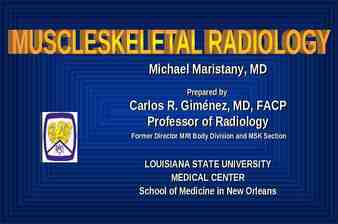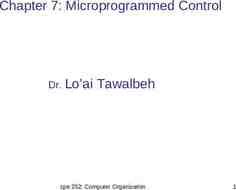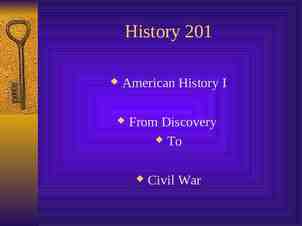Introduction to Global Politics Sixth Edition by Steven Lamy and
43 Slides912.65 KB
Introduction to Global Politics Sixth Edition by Steven Lamy and John Masker
Global Security, Military Power, and Terrorism Chapter 6 2018 2
What Is Security? Can global security (a world without war and extremist violence) be achieved? Level of analysis approach: Should security focus on individual, national, or international security? During the Cold War “national security” meant “military security” – Indication of dominance of realist academic perspective Reactions to realist perspective – From late 1980s “societal security” school, or “widening school,” of thought developed Goal: Broaden the discourse on security to include economic, environmental, social, and political issues – From 1990s: Ethnonational security Reaction to genocides in several multiethnic countries 2018 3
Mainstream Approaches to National Security 2018 4
Security: Realist and Neorealist Views International system is anarchic, peace is temporary States will try to balance against one another to avoid the ascension of a hegemon Key concepts – Security dilemma: Uncertainty and lack of trust among states – Cheating: Cooperation hindered by constant fear that anther state will cheat to gain an advantage – Relative gains: States are more concerned about status as compared to other states instead of absolute status in the international system 2018 5
Liberal Institutionalists on Global Security International institutions help promote stability and cooperation in the international system States investing in these institutions is evidence of their belief that they are beneficial to the international system Institutions created after the Second World War in Western Europe have diminished concerns of a general European war Examples: Bretton Woods regime, EU, ASEAN Key concept: Security community Shared values, common aversions lead to cooperation Example: NATO Democratic Peace Thesis 2018 6
Security: Constructivist Perspective Fundamental structures of the international system are social rather than material – Structure is a product of social relationships – Shared knowledge, practices, and material resources shape security relationships – Security dilemma is a social structure composed of intersubjective judgments – Security community is a different social structure: Shared knowledge can thus resolve conflicts without war 2018 7
Alternative Views on Global Security Critical Security Studies: Feminism – Challenge the central role of the state in security analysis – States are a source of security and insecurity – Women are affected as much or more than men in war The use of rape as a tool of war Majority of refugees are women and children – Masculinization of security and war Cohn: Language, terms of war are highly gendered 2018 8
Marxist and Radical Liberal or Utopian Approaches to Security Support a transformation of the current economic and political system Globalization has spread capitalist ideas Capitalism as a source of conflict and inequality Secular radicals 2018 9
Changing Character of War War is no longer the only instrument of state policy: Today war and security have been altered due to more amorphous threats such as terrorism Asymmetrical warfare: States fighting nonstate actors –Conflicts usually occur in urban or remote rural settings –Major difference in weapon capacity and technology between state and nonstate actors in conflicts –Multidimensional battlefield: Soldier on the ground, cyberspace, satellites, drones 2018 10
The Nature of War Clausewitz: War as a means to an end War is not random violence but a rational political decision War is an act of violence to compel ones opponent to fulfill one’s will Development of war If war is a political decision it develops as our understanding of politics develops Contemporary wars are local wars fought on a wider field – Television, Internet, IGOs, and NGOs have influenced the nature of war – Global media helping to induce “war fatigue” Nature vs. character of war as described by Clausewitz and Gary 2018 11
The Revolution in Military Affairs Technology: advances reduce uncertainty and increase efficiencies of a fighting force Idea introduced after “effortless” victory in the 1991 Gulf War Overlooks nontechnological factors and creates oversimplified picture of a more complex phenomenon 2018 12
Postmodern War Changing modes of production and eventual outputs in advanced societies are altering the character of war Globalization has weakened normal forms of identity (nationalism) and at the same time a resurgence of older forms of identity taken place (ethnic, clan, religious) Changing “modes of information” –The role of broadcasting and journalists in conflicts –Journalists are no longer observers but active participants 2018 13
Rise of Asymmetric Warfare Insurgency and guerilla tactics to mitigate military imbalance Met with a counterinsurgency (COIN) response with mixed results Providing security for the local population, preventing attacks against civilians, protecting infrastructure, providing safe regions for civilians Helping local government provide basic services shift loyalties from insurgents to local authorities 2018 14
Rise of Asymmetric Warfare Alternative to COIN is counterterrorism Less expensive, less direct, and requires less commitment Identification, tracking, and elimination of terrorist networks Using technology to hunt and track the enemy Sharing intelligence with other states Targeting insurgent leadership with unmanned drones and covert operations Bacevich: US strategy relies on two assumptions that may actually increase the amount of time wars will require Sustained US military action is the only way of defeating terrorism Physical presence of US troops in fragile Muslim-majority states makes them less hospitable to terrorist networks 2018 15
Hybrid Warfare Gray zone tactics: cyberattacks, propaganda, subversion, economic blackmail, sabotage, sponsorship of proxy wars, and at times aggressive military expansion Used by nation-states, including Russia, China, and Iran to secure their interests Example: Russia in the Crimea Data breaches and malware attacks Hybrid warfare allows inferior militaries to deter superior ones 2018 16
Globalization and New Wars Emergence of “new” wars since the 1980s where the conflict is characterized by the disintegration of the state States loses control of various sectors of economy and areas of national territory Use of child soldiers Use of privatized military firms (PMFs) New roles for NATO 2018 17
Nuclear Issues 2018 18
Proliferation and Non-Proliferation The collapse of the Soviet Union was the only instance in which a nuclear state disintegrated The importance of cooperative threat reduction programs and agreements Established framework for former Cold War adversaries to handle the disintegration of the Soviet Union and the implications for its nuclear weapons Proliferation optimism and pessimism Nonproliferation regime: Product of first nuclear age (1950–1990)? The NPT as a means of disarmament or a means of limiting new nuclear weapons states 2018 19
Nature of Nuclear Weapons Difference between nuclear weapons production and nuclear power production – For nuclear weapons a chain reaction is required, whereas for power generation a moderation of the reaction is required – Separate processes are needed for each Nuclear weapons effects – WMD: Weapons of mass destruction – CBRN: Chemical, biological, radiological, and nuclear – Three forms of energy with a nuclear explosion: Blast, heat/thermal, and nuclear radiation 2018 20
Nuclear Defense U.S. National Missile Defense (NMD) Act of 1999 Brought into question the ABM Treaty Debate in Europe over stationing of U.S. Ballistic Missile Defense in Poland and Czech Republic 2018 21
Theorizing Nuclear Proliferation What is nuclear proliferation? Acquiring a nuclear weapon or the process of constructing a nuclear weapon Why haven’t nuclear weapons been used? Nuclear weapons only good in their nonuse (i.e., as a deterrent) 2018 22
Nuclear Motivations Shift from nuclear weapons being war-winning weapons to weapons of deterrence Transnational actors and the procurement of nuclear weapons Nuclear capabilities and intentions – Difficulty of reaching international consensus on noncompliance – Cases of Iraq and Iran highlight difficulty on both sides 2018 23
Counter-Proliferation After Cold War Missile Technology and Control Regime and the Hague Code of Conduct Comprehensive Test Ban Treaty and lack of consensus Iran DPRK 2018 24
Terrorism and Extremism 2018 25
Defining Terrorism Use of violence to achieve political goal Historically ambiguous term Prior to the past half-century, terrorism was state violence against citizens Over the past half-century, terrorism has described violence by small nonstate actors in an attempt to achieve political change 2018 26
What Is Terrorism? Terrorism only legitimate if it meets the criteria of the “just war” tradition Terrorist justifications and methods are not easily coopted into international relations theory Determining the legitimate use of force Libya United States and Britain 2018 27
Typology of Terror Left-wing terrorists Right-wing terrorists Ethno-nationalist or separatist terrorists Religious or “sacred” terrorists 2018 28
Terrorism: To Achieve Political Change Needs broad support of population Potentially alienate supporters Necessity of being in the headlines to achieve goals 2018 29
Globalization, Technology, and Terrorism Use of Internet for communication – Chat rooms – Saved draft messages – Prepaid cell telephones – Hacked USAF drone signals Better training, methods, equipment 2018 30
The Global Reach of Al Qaeda Can a nation-state respond to networks like this without global cooperation? 2018 31
Terrorism: Domestic to Global Phenomena (1968–2001) Nineteenth-century groups relied on the railroad and telegraph – Impact rarely went beyond state borders – Goal was internal change – Used revolvers, small bombs 2018 32
Terrorism: Domestic to Global Phenomena (1968–2001) Three factors leading to transnational terrorism in 1968 – Expansion of commercial air travel – Availability of news coverage – Political and ideological causes converged among groups 2018 33
Terrorism: Domestic to Global Phenomena (1968–2001) In 1980s three developments emerged concerning terrorism – Fewer but more deadly indiscriminate attacks – Increasing sophistication of attacks – Greater propensity for suicide attacks – Resources for Marxist-Leninist groups dissolved with the end of the Cold War – Militant Islamic groups developed 2018 34
Terrorism: Explaining Militant Islam Cultural explanation – Violence is the only manner in which to defend against Westernization and materialism – Safeguarding identity – Samuel Huntington and “clash of civilizations” 2018 35
Terrorism: Explaining Militant Islam Economic explanation – Defense against Western economic imperialism – Exploitation of less developed countries by World Bank, IMF, and so on – Sense of alienation and lack of opportunity in less developed countries – However, “tenuous” link between inequality and terrorism 2018 36
Terrorism: Explaining Militant Islam Religious explanation Postmodern terrorism or new terrorism and the constructivist international relations theory New terrorism as an explanation for global jihad Infidels and apostates Difference between secular and religious groups Deterrence Difficulty of coopting members out of religious groups 2018 37
Current Challenge: Persistence of the Islamic State Territorial caliphate no longer exists, but the organization and its strategy persist Acted like a regular state—providing basic services, taxing the people, and providing law and order, but heavily repressive 2018 38
Current Challenge: Persistence of the Islamic State Use of Al Qaeda’s seven stage strategy for achieving an Islamic global caliphate Stage I: The Awakening Stage (2000–2003) Stage II: The Eye-Opening Stage (2003–2006) Stage III: The Rising Up and Standing on the Feet Stage (2007– 2010) Stage IV: The Recovery Stage (2010–2013) Stage V: Declaration of the Caliphate Stage (2013–2016) Stage VI: The Total Confrontation (2016–2020) Stage VII: The Definitive Stage (2020–2022) 2018 39
Globalization, Technology & Terrorism Proselytizing via Internet: cheap with access to large audience Coordination Security within organizations Mobility Lethality 2018 40
Combating Terrorism Steps taken by the UN and Interpol ICAO, Hague Convention for the Suppression of Unlawful Seizure of Aircraft Public Safety and Terrorism Sub-Directorate 2018 41
Counter-Terrorism: Law Enforcement Model Terrorism as a crime Rule of law (domestic and international) Multilateralism Multiple tools: Criminal justice, diplomacy, public relations, development aid, and so on 2018 42
Counter-Terrorism: War on Terrorism Model Military response to act of war Unilateral action, not restricted by multilateral institutions Preemptive war Aggressive pursuit of terrorism at home and abroad 2018 43
















































